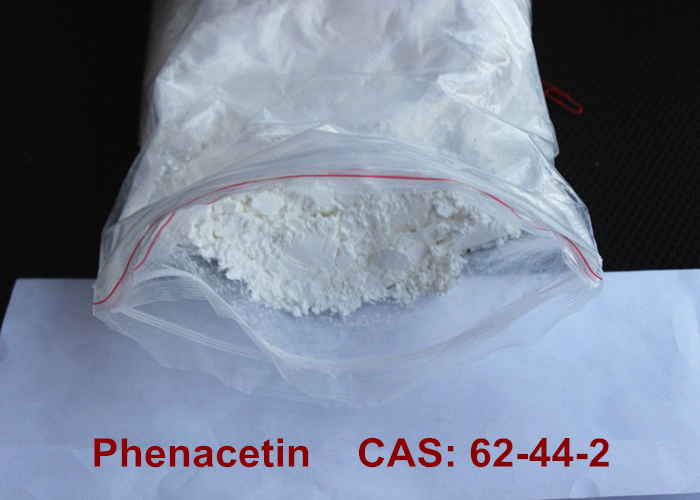| Message: | Phenacetin CAS: 62-44-2
Product Name: Phenacetin
CAS: 62-44-2
MF: C10H13NO2
MW: 179.22
EINECS: 200-533-0
mp: 133-136 °C
bp: 132 °C / 4mmHg
storage temp: 2-8°C
Water Solubility: 0.076 g/100 mL
Sensitive: Hygroscopic
Stability: Stable. Incompatible with strong oxidizing agents, strong acids
Appearance: White Powder
Description:
It is also called acetophenetidin. Having glossy leaflets or scales-like crystals that have no odor or taste. Melting point 133-136 °C. Stable in air, soluble in water, slightly soluble in boiling water, slightly soluble in ether, soluble in ethanol, chloroform. It is formed through the etherification,reduction and Acetylation reaction of pchloronitrobenzene. As chloroacetanilide antipyretic and analgesic agent. Suitable for fever,headache, neuralgia and other drugs as a compound agent.
Antipyretic effect is stronger than the analgesic effect. Effect of strength is slow and long-lasting as aspirin, low toxicity. Research shows that: This product and its metabolites acetaminophen have the antipyretic effect. Because the enzyme inhibitor make phenacetin not be converted into paracetamol, still showed obvious antipyretic effect,thus the antipyretic effect after the product line not converrt to paracetamol.The mild phenacetin analgesic effect usually lasts 3 to 4 hours; and synergistic effect, of alicylic acid
coadministrationmake the analgesic effect enhancement. The main clinical is for small animal antipyretic analgesic. This product is also a component of the APC tablet.
Phenacetin is a pain-relieving and fever-reducing drug, widely used from its introduction in 1887 until banned in the US by the FDA in 1983. Its use has declined because of its adverse effects, which include increased risk of certain cancers and kidney damage. It is metabolized into paracetamol, which replaced it in some over-the-counter medications following the ban on phenacetin. |
 my account
my account
 log out
log out
 my account
my account
 log out
log out
